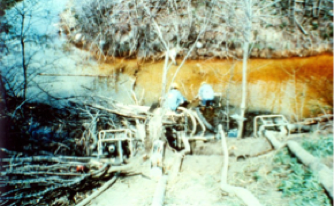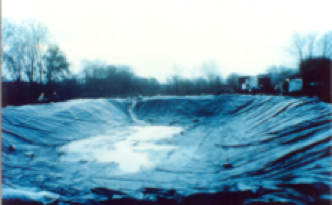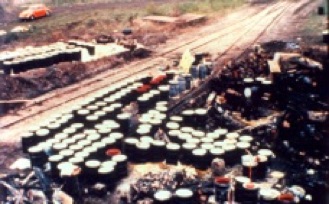PROBLEM
An agricultural chemical plant was ignited by an arsonist containing over 11,000 pounds of pesticide and herbicide inventory in Central,
Illinois. Phosgene toxic corridors were projected using a model presented to the National Transportation Research Board. Estimated evacuation and shelter-in-place zones were used by local authorities. A city evacuation of residents and nursing home patients were sheltered-in-place.
AGRICULTURAL CHEMICAL FIRE REMEDIATION SOLUTION
Site remediation measures implemented included:
1. Emergency construction of a 300,000 gallon temporary treatment lagoon for stream leachates from fire fighting operations.
2. Emergency bench-scale treatment evaluated included granular activated carbon filtration, hydrogen peroxide oxidization, alkaline hydrolysis, and powdered activated carbon (PAC) addition.
3. A PAC dosage of 1,000 mg/l resulted in clarified water without turbidity and removal of burn residues containing organophosphates, carbamates, and furidan and 8 drums of waste
4. 300,000 gallons of treated water were released to a receiving stream and only 450 gallons of sludge were generated. Chemical
burn residues were extracted for offsite disposal. Residual soils were treated insitu via alkaline hydrolysis.
AGRICULTURAL CHEMICAL FIRE REMEDIATION COST/BENEFITS
1. Insitu treatment of 300,000 gallons of fire leachates with powdered activated carbon (PAC) resulted in only 8 drums of waste and allowed draining clean water to the nearby stream.
2. Soil treatment was completed as a research project by at State University.
3. Employing alkaline hydrolysis and PAC treatment saved the client over a hundred thousand dollars.
This project was featured as a cover story in Civil Engineering Magazine. The insurance company, that paid for the cleanup, required secondary containment and storage for agricultural chemicals as a requirement for insurance.



